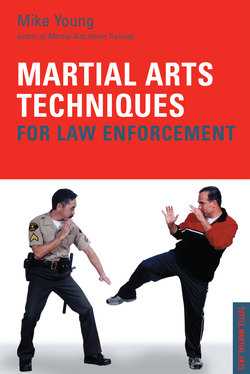Читать книгу Martial Arts Techniques for Law Enforcement - Mike Young - Страница 9
На сайте Литреса книга снята с продажи.
ОглавлениеINTRODUCTION
This book introduces a set of invaluable skills you can add to the “bag of tricks” you call on in difficult or dangerous situations. I hope you will use it as a practical guide to preparing for the worst—the possibility that you will someday be attacked or otherwise need to employ martial arts techniques in your work.
I wrote this book because of the dramatic rise in assaults on law enforcement officers. According to the National Law Enforcement Officers Memorial, more than 62,000 officers are assaulted every year. Of those, over 21,000 are injured! (This doesn’t include the many assaults and injuries that go unreported.) The majority of these assaults on officers are carried out with an attacker’s “personal weapons”—hands, fists, or feet. (See Appendix A for more details.)
In a real fight, you may not be able to use a gun. Because of the suddenness of the attack or the proximity of others, pepper spray or batons may not help either. You may be left with only your hands, fists, or feet—and your brains—to defend yourself.
At the beginning of my career in law enforcement—over twenty-three years ago—I was already an accomplished martial artist, with a black belt in wado ryu karate, a black belt in chuan fa kajukenbo, and black belts in both tae kwon do and hapkido. I had studied judo, aikido, kenpo, northern and southern shaolin, tai chi, pa kua and hsing i, just to name a few. Since then I have been all over the world—from France, Indonesia, China, Hong Kong, and Taiwan to Brazil, Belgium, Hawaii, and New Zealand—trying to find martial arts techniques that could be applied in a law enforcement environment. For the past eight years, I have taught law enforcement officers defensive techniques based on the best the martial arts world has to offer. I have taught cadets; custody officers; patrol officers; SWAT teams; security officers; state, local, and federal law enforcement agencies; chaplains; and women’s and community groups, just to name a few.
Figure 2: Training in a SWAT school
Figure 3: Training an academy class
I challenge every class: if one of the members can knock me out, I will buy them dinner. I am 5 feet, 9 inches tall and weigh about 155 pounds—and I have never bought a dinner yet. In developing my techniques, I have tried to follow Bruce Lee’s axiom: “Use what is useful, disregard what is not.”
The defensive tactics program used in our department (which is over 10,000 strong) focuses on techniques that will help officers on the street, in court, or in a custodial environment. These techniques were chosen because they are both effective and easy to learn—the simpler, the better.
Having this knowledge is good, but being able to put it into practice is crucial. It is up to you to use this information to become a better officer—by improving your defensive skills. There are plenty of suggestions in this book for ways to practice and refine these techniques—but it’s up to you to get started. These techniques are sure to come in handy, and they may save your life. If they help save just one of you from injury or death, then this book will have more than served its purpose.
